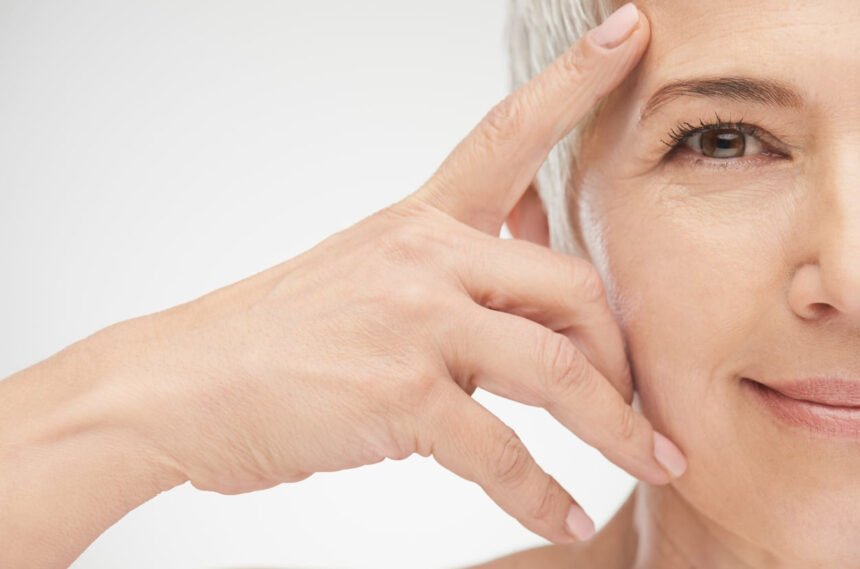Sagging skin is something a lot of us notice as we get older—it can really change how we feel about our appearance. Basically, as skin loses its bounce and elasticity, it doesn’t snap back like it used to. It’s a normal part of aging, but for some folks, it shows up sooner or more dramatically than for others.
There are quite a few reasons why skin starts to sag: aging, sun exposure, weight changes, and, of course, genetics. We can’t hit pause on getting older, but thankfully, there are more options than ever to tackle sagging skin. Whether you lean toward creams, high-tech non-surgical fixes, or even surgery, the landscape has changed a lot in recent years.
Figuring out what’s behind your own skin changes is the first step to picking a treatment that actually works for you. Everyone’s skin is different, so what helps your friend might not do much for you. Treatments these days run the gamut—from simple daily tweaks to more involved medical procedures.
Sagging Skin Explained: Causes and Modern Treatment Options
Pretty much everyone deals with some skin laxity as they age, though it shows up at different times and to different degrees. Both what’s happening inside your body and what you’re exposed to on the outside play a role, and the ways we treat sagging skin keep evolving as technology moves forward.
Understanding Skin Structure and Aging
Your skin is made up of three layers: the epidermis (the outside), the dermis (the middle), and the hypodermis (the deepest part). Collagen and elastin in the dermis are what give skin its strength and stretchiness. The catch? After age 20, your body makes about 1% less collagen each year. Not exactly a fun fact, but there it is.
As collagen production drops, the “scaffolding” that supports your skin gets weaker. Elastin fibers, which let your skin bounce back, also start breaking down. Plus, the skin’s renewal cycle slows down over time. While young skin may renew every 28 days, older skin can take anywhere from 45 to 90 days, so it gets thinner and just doesn’t recover the way it used to.
Primary Causes of Sagging Skin
The biggest reason for sagging is that collagen and elastin break down as we age. These two proteins are like the skin’s internal support beams, and when they dwindle, skin loses its firmness and bounce.
Sun damage (photoaging) makes things worse—UV rays sneak into the skin and kick off enzymes that chew up collagen. Some studies even suggest UV exposure is behind up to 80% of visible facial aging. That’s a lot of sunscreen you wish you’d worn, right?
Gravity is always working against us, too. Areas where skin is thinner, like the eyelids and neck, are usually the first to show sagging. Weight ups and downs stretch skin, and if you lose or gain a lot (especially more than once), your skin might not shrink back. This is pretty common around the tummy, arms, and face.
Lifestyle Factors Influencing Skin Elasticity
Smoking is a real skin ager. It cuts off blood flow and starves your skin of oxygen and nutrients, while all those chemicals in smoke actually damage collagen and elastin. Some research says smokers’ skin can look up to a decade older than non-smokers. Yikes.
What you eat matters, too. Antioxidant-rich foods help fight off free radicals that mess with skin cells. On the flip side, a diet high in refined sugar can cause glycation, which sort of “glues” collagen fibers together and makes them stiff and less useful.
Sleep is underrated. During deep sleep, your body makes more growth hormone, which boosts collagen. If you’re always running on empty, cortisol goes up, and that can break down collagen even faster. Staying hydrated keeps skin looking plump, while too much alcohol dries it out and robs it of nutrients it needs to stay healthy.
Genetic and Hormonal Contributions
Your genes play a big role in how thick your skin is, how dense, and how quickly it ages. Some people are just lucky and keep making decent collagen as they get older. Skin type matters, too—those with darker skin usually see fewer early signs of aging, probably thanks to more melanin doing its protective thing.
Hormones, especially estrogen, have a big impact on skin’s elasticity. Estrogen keeps skin hydrated, thick, and collagen-rich, but when levels drop during menopause, collagen loss can really speed up—sometimes by as much as 30% in just five years. That’s a tough stretch for a lot of women.
Thyroid issues can mess with your skin, too. Low thyroid (hypothyroidism) often leads to drier, less elastic skin, and stress-related cortisol swings break down the proteins that keep skin firm.
Guide to Choosing the Right Aesthetic Clinic in Singapore
An aesthetic clinic in Singapore is often seen as a top destination for advanced skin treatments in Asia, blending Eastern and Western approaches with high-tech tools. With strict medical regulations, patients can trust that practitioners are qualified and safety is prioritized. Many clinics specialize in non-surgical skin tightening, such as HIFU, which targets the SMAS layer once only accessible through surgery.
Using advanced imaging systems, doctors can personalize treatments by analyzing even invisible skin damage. These clinics cater to both younger clients focused on prevention and older patients seeking correction, reflecting Singapore’s diverse beauty standards and needs.
Non-Surgical Skin Tightening Treatments
Radiofrequency devices send controlled heat into the dermis, which gets collagen production going without hurting the outer layer. Usually, you’ll need a few sessions, and results build up over a couple of months—no major downtime.
Ultrasound treatments like Ultherapy use focused sound waves to heat deeper tissues, triggering your body’s natural healing. It’s pretty cool that it targets the same layers as a facelift, but without the knife.
Laser treatments come in two main types: ablative, which removes outer skin for bigger results (but more downtime), and non-ablative, which works underneath and needs more sessions but less recovery time.
Thread lifts involve placing dissolvable threads under the skin to lift and stimulate collagen. Newer threads, like PDO and PCL, dissolve in 6-12 months but keep working by encouraging collagen growth even after they’re gone.
Advanced Minimally Invasive Procedures
Microneedling with radiofrequency is a bit of a powerhouse—it uses tiny needles and heat to create controlled micro-injuries. This combo gets your skin to ramp up collagen more than either treatment alone, and some studies show up to 40% improvement in skin laxity after just three sessions.
Injectable biostimulators like Sculptra and Radiesse add volume right away and kickstart your body’s own collagen production over a few months. It’s a gradual change, but one that can really pay off if you’re patient.
Plasma fibroblast therapy uses ionized gas to make tiny burns on the skin, which tightens and activates fibroblasts. It’s a newer approach—great for upper eyelids and fine lines—but you’ll need to be okay with visible dots for about a week while healing.
Sometimes, the best results come from combining treatments. Many clinics now layer ultrasound for deep tightening with radiofrequency for the mid-dermis, aiming for a more complete skin-firming effect. It’s a bit of trial and error, honestly, to find what works best for your skin, but the options are definitely out there.
Emerging Innovations in Treatment
Exosome therapy is honestly one of the most exciting things happening right now—it uses tiny cell-derived vesicles packed with growth factors and mRNA. These messengers can nudge your cells to repair and regenerate themselves, and they seem to do it with a lot more precision than those older growth factor treatments ever did.
Artificial intelligence is also making a real difference in how treatments get planned. Instead of guesswork, AI digs into detailed skin analysis and even predicts what your results might look like. Practitioners can now tailor combinations of treatments after looking at data from thousands of similar cases, which feels like a big leap forward for personalized care.
For More Information, Visit Dotmagazine








